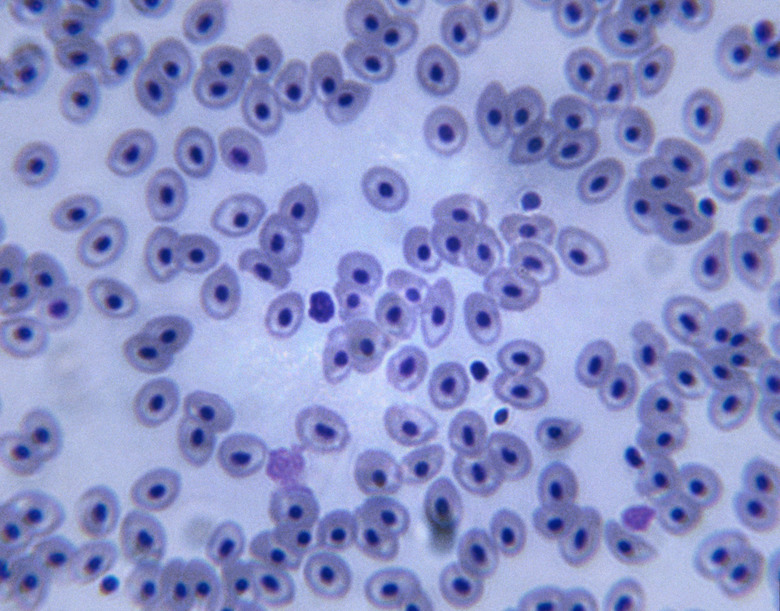What Structural Role Do Phospholipids Play In Cells?
Phospholipids are molecules that compose the main structure of the cell membranes in eukaryotes.
The role of phospholipids in the cell membrane is central to determining which chemicals can enter and exit the cell. They also conduct signal transmission from the extracellular compartment to the intracellular compartment.
Read more about the primary functions of phospholipids.
Phospholipid Definition
Phospholipid Definition
A phospholipid is an amphipathic molecule, which is a molecule that contains both hydrophilic and hydrophobic groups. Phospholipids contain two fatty acid chains bound to a negatively charged phosphate head group and a glycerol backbone.
The fatty acid chains are uncharged and nonpolar. This creates the fluidity and flexibility that is crucial to membrane structure and function.
Phospholipid Structure
Phospholipid Structure
The phospholipid bilayer is two layers of phospholipids adjacent to each other. The outermost layer has its hydrophilic phosphate head group oriented toward the extracellular compartment outside the cell. The innermost layer has a phosphate group that is oriented toward the intracellular compartment.
The hydrophobic fatty acid chains of both layers face toward one another. Thus, they are shielded from the aqueous extracellular and intracellular compartments by the phosphate groups. The fatty acid chains are unsaturated which creates the fluidity and flexibility that is a feature of all biological membranes.
Non-uniformity is another important feature of cell membranes. The membranes include specialized molecules such as lipid rafts and specialized protein complexes. Lipid rafts are small, transient areas of specific lipids in the cell membrane that can help signal critical cell processes such as endocytosis, signal transduction or apoptosis.
Phospholipid Function
Phospholipid Function
The main function of phospholipids is to create a stable barrier between two aqueous compartments. This can be the intracellular and extracellular compartments in a cell membrane. Organelle membranes separate the intracellular compartment (cytoplasm) from the aqueous compartment within the organelle.
Phospholipids are also responsible for an important feature of the cell membrane called selective permeability. Selective permeability is the ability of a cell membrane to only permit certain molecules to enter or exit the cell.
Small, uncharged molecules like H20, O2 and CO2 can pass through the membrane, but large molecules like glucose and charged molecules like H+ cannot pass. These molecules must use transmembrane proteins and channel proteins to cross the cell membrane.
Phospholipids play a role in cellular signaling. If a chemical contacts the external surface of the cell membrane but is insoluble, it will not be able to enter the cell. The phospholipid can then act as a second messenger in a signaling cascade system by transmitting a chemical signal from the surface to the interior of the cell. A cellular response is then created in the nucleus or cytoplasm.
Several organelles also have a membrane containing phospholipids. These include the endoplasmic reticulum, mitochondria, chloroplasts, vesicles, the Golgi apparatus and more. The nucleus, mitochondria and chloroplasts have a phospholipid bilayer whereas the remaining organelles contain a single lipid layer.
Phospholipid Molecule
Phospholipid Molecule
Mammalian cell membranes are mainly composed of the following four types of major phospholipids:
- Phosphatidylcholine
- Phosphatidylserine
- Phosphatidylethanolamine
- Sphingomyelin
These constitute 50-60 percent of total membrane phospholipid. cholesterol and various glycolipids represent the remaining 40 percent of membrane lipid.
Phosphatidylcholine is a precursor of the important neurotransmitter acetylcholine.
Phosphatidylserine is essential for normal cognitive function of human neurons. It is responsible for the targeting and function of several intercellular signaling proteins. The exposure of phosphatidylserine to the membrane surface initiates blood clotting and the removal of cells that have undergone apoptosis.
Phosphatidylethanolamine is a cone-shaped phospholipid found in many organelles. It is a precursor of phosphatidylserine and it promotes both thrombosis and also acts as an anticoagulant in two different pathways.
Sphingomyelin is a phospholipid consisting of two hydrocarbon chains bound to a polar head group containing serine. Other phospholipids are bound to a glycerol backbone. Sphingomyelin is present extensively in the myelin sheath surrounding nerve cell axons.
Micelle Structure
Micelle Structure
When a drop of phospholipids is placed in water, the phospholipids self assemble into a spherical structure called a micelle. The hydrophilic phosphate heads are oriented facing the water while the hydrophilic tails are tucked into the interior of the structure.
Micelles are useful for the therapeutic delivery of water-insoluble drugs. They provide a stable structure and controlled release of the drug macromolecules.
Read more about what micelle is in biochemistry.
Cite This Article
MLA
Mends, Francine. "What Structural Role Do Phospholipids Play In Cells?" sciencing.com, https://www.sciencing.com/structural-role-phospholipids-play-cells-16381/. 30 July 2019.
APA
Mends, Francine. (2019, July 30). What Structural Role Do Phospholipids Play In Cells?. sciencing.com. Retrieved from https://www.sciencing.com/structural-role-phospholipids-play-cells-16381/
Chicago
Mends, Francine. What Structural Role Do Phospholipids Play In Cells? last modified March 24, 2022. https://www.sciencing.com/structural-role-phospholipids-play-cells-16381/
